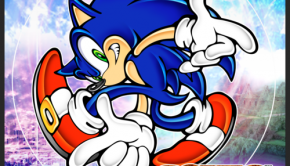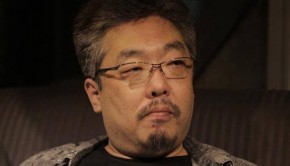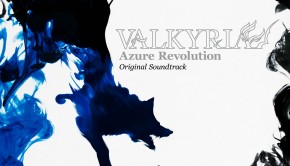Nekketsu Kouha Kunio-Kun Music Collection
 |
Album Title: Nekketsu Kouha Kunio-Kun Music Collection |
| Record Label: Wavemaster |
|
| Catalog No.: GNCA-7122 |
|
| Release Date: November 21, 2008 |
|
| Purchase: Buy at CDJapan |
Overview
The name “Kunio-kun” probably doesn’t mean much to the average Western gamer. Exactly what is Kunio-kun? “Kunio” refers the main recurring character of the series and the “-kun” suffix is part of the Japanese system of honorifics, usually used when a person of senior age addresses a person younger than them. Originally produced by the now-defunct Technos Japan Corporation, the series was (and still is) a long-running video game franchise that contained a wide variety of sports and action titles. The series’ star Kunio is a hot-blooded high school delinquent who’ll beat up anyone who challenges him. When he’s not fighting thugs on the street, he’ll be with his pals playing various sports that often contain rule-breaking events. In the US, a handful of select titles were brought over and “Americanized” for release, namely Renegade, Super Dodgeball, River City Ransom, Nintendo World Cup, and Crash ‘n the Boys: Street Challenge. Although the series has been on many platforms, it’s these Famicom/NES classics that the franchise is best known for.
With the series containing many titles, various composers have handled the series over the years, though Kazuo Sawa handled the majority of the classics. In 2008, record label Geneon Entertainment released the ultimate soundtrack collection for fans of the series. This four-disc set contains all the music from every Kunio-kun Famicom release. Although there’s eleven games featured here, the musical compositional stays consistent throughout, though varies in overall quality. I should mention that since these are retro Famicom soundtracks, we’re still limited by only a few channels of sound. Despite this, the series’ composers have managed to craft cheery and upbeat music that worked very well when put in context with the games. Now that I’ve listened to it on a stand-alone basis, do these retro chiptune tracks still hold up after all these years?
Body
Renegade, while more or less an average game, was a landmark in the beat em’ up genre that even predated classics like Double Dragon. Being the first to introduce commonplace tropes like four-way directional control, punching-jumping-kicking combos, and enemies that could sustain multiple hits, Renegade is considered to be one of the most influential video games. With this being an early and rather primitive game, the music is nothing really too special. The first three tracks are only short jingles that have little enjoyment when put outside of the game. “Platform Scene” and “Area Scene” are the first “real” tracks, but they both have rather repetitive melodies. More area themes follow, but they all suffer from the same flaws. The format for these area themes is that the simplistic main melody will be backed up by an alternating line of 2 or 3 notes. The theme “Ending” is a proud, but slightly melancholic, march that manages to get its job done despite the short running time. I can imagine that these tracks were innovative and catchy for the time, but they simply have not aged well by today’s standards. Even the most die-hard of chiptune music enthusiasts will see the repetitive nature of these tunes.
Super Dodgeball was the first sports game in the series. As the title suggested, the game was a dodgeball tournament competition where players could perform a wide variety of moves and tactics to get the team in higher standings. Realistic? No. Fun? Yes. The music appropriately reflects upon the ethnicities of each stage’s country. For example, “Vs India, Team Theme” and “Vs China, Team Theme,” are both Oriental in nature using Eastern-styled melodies. “Vs Japan, Team Theme” is actually an 8-bit version of the traditional folk song “Sakura Sakura.” Another notable homage is the “Vs England, Team Theme” which is said to be a combination of the two Beatles songs “Hard Day’s Night” and “Get Back.” “Vs. Iceland, Team Theme” perfectly matches the icy and barren landscape of the cold stage too. Overall, the music to Super Dodgeball is a huge step-up from its predecessor. Kazuo Sawa’s musical composition is more advanced, and the synth and mixing is improved as well.
While Renegade provided the blueprint of future beat em’ ups to come, River City Ransom is widely considered by many to be the best in the series with its level design and innovative multiplayer. It took everything that Renegade had, and improved upon every single aspect considerably. During the opening cutscene, “Story” provides the right amount of backing as we see our hero, Kunio, begin his fight. The piece really gives him that “tough guy” feel. Similarly, the game’s main theme “Theme of Downtown Nekketsu Monogatari” simply just works. Running at 3:39, I’m surprised at the amount of composition flowing from this piece. It reminds of the determined nature of the protagonist: someone who’ll fight through an endless array of thugs to save his girlfriend. In contrast, “Park, by the River Bed ~Momentary Peace~” is a more mellow piece, that feels relaxing and even waltz-like. “Shopping Song” is another change from the rest of the soundtrack’s more fast-paced track, an acoustic BGM that was originally used when buying power-ups and heath items during the game. With this being a beat em’ up, there are several boss themes. All the boss fight themes here are tense and fast-paced, but none sound similar to each other at all. An interesting track of note is “Double Dragon Brothers Theme ~Ryuichi & Ryuji Appear~.” I was completely caught off guard and did not expect to hear this familiar track. Why? Because it’s the exact same as the title theme from the original Double Dragon. While this theme was and still is, an amazing 8-bit track, I can’t help feel that it’s slightly out of place. However, Technos Japan is the same company that made the original Double Dragon in the first place, so it is a cool easter egg nonetheless. I believe that this is where Kunio-kun first hit its stride, musically.
The next game in the series was a soccer game titled Nintendo World Cup. The opening jingle “Technos Japan Logo” is an 8-bit version of the chimes heard from the London clock tower Big Ben, while “Intro 1” expands upon this basic theme and makes it into a full-fledged track. “Title,” which is more or less the main theme, is heroic and fitting. “First Match,” intense, but still laid-back, feels like it would be perfect for an 8-bit sports montage. “Fourth Match,” “Seventh Match,” and “Tenth Match,” are more adrenaline rushing as the stakes get higher with every round. “Tournament Finals,” just as the title implies, is the theme for the last round. Surprisingly, it reminds me of the “The Final Countdown” by Europe! “Practice Game” is similar in style to the other main themes, yet feels different since it’s a tutorial theme. Beyond those main themes, the rest of the soundtrack contains simple jingles that represent each team. While effective in the game, they mean little out of context. Even though Nintendo World Cuphas 32 tracks that represent its soundtrack, don’t be fooled here with its length.
Downtown Nekketsu Koushinkyoku: Soreyuke Daiundoukai (lit. Downtown Nekketsu March: Let’s Go to the Great Athletic Meet) was a compilation of several events including Cross Country, Obstacle Course, Ball Pole, and Fighting Tournament. It was never released outside of Japan, which I view as a shame seeing has how much fun I had with its crazy multiplayer. Why this game was never localized is beyond me. This would unfortunately become a pattern with later games in the series, as a majority of them stayed Japan-exclusive. Luckily, through fan translations, these games can still be played. “Hot Blooded Match” is a sad, but proud march that sets the tone for what’s ahead. Surprisingly, even something as minor as the menu BGMs have full-fledged themes. “Game Program (Theme of the Older Sisters),” “Theme of the Older Sisters 2,” and “Tension, Preparation for the Match,” are all similar in style, yet varied in their composition. The first area theme “Like a Work Horse (Match BGM 1)” is an 8-bit rendition of the German gallop Csikós Post. Throughout the years, the Kunio-kun series’ composers would often use classical music and, later on, the use of Csikós Post would become a series staple in its music. “Faster than Bullets (Match BGM 2)” is another fast-paced theme, but I felt that it was a little repetitive. On the other hand, I enjoyed the heroic melody of “Charging Youth (Match BGM 3)” and “Ardent Battle (Ingame BGM 4)” is likewise a fitting theme used during the game’s fighting event. “Tobidase, Hot Blooded Rascal (Ingame BGM 5)” is more light-hearted, but still contains elements of what I like to call “8-bit rock.” The final area theme “Last Straight Course (Ingame BGM 6),” while intense and blood-pumping, is another rather repetitive theme. After a few jingles, we have the two ending themes “Ending Theme 2,” and “Ending Theme 1,” in that order. The former is a sillier, more upbeat theme; while the latter is more serious. Overall, the music for this game is one of the stronger soundtracks the series has to offer. I enjoyed most of the themes presented here, and feel that it is a worthy addition to the Kunio-kun canon.
The “true” sequel to River City Ransom came with the next Kunio-kun game, Downtown Special: Kunio-kun no Jidaigeki da yo Zen’in Shugo (lit. Downtown Special: It’s Kunio’s Period Piece, Assemble Everyone!!). Rather than the rather linear style of gameplay that River City Ransom had, its sequel had a more “free-roaming” style of play in which Kunio and his friends could find different gang members and fight them. While an interesting idea on paper, a majority of the game was spent on empty screens with no enemies. The overall game also suffered from a confusing layout. Perhaps this was enough reason to not justify localization. Even still, it wouldn’t be hard to imagine this game being billed as River City Ransom II, seeing as both share similar gameplay. Trading in the series’ regular modern day setting, this game was a period piece set in feudal Japan. The “Jidaigeki” portion of the title is a Japanese term used for period dramas. A well-known example of Jidaigeki would be Akira Kurosawa’s well classic films and this influence is also apparent in the game’s music. While other Kunio-kun games typically feature upbeat and cheerful music, or 8-bit interpretations of classical themes, this soundtrack stands out as “Japanese-sounding.” The game’s intro piece, “A Dude Stylish for a Short Time,” seems inspired by feudal Japan and quite mysterious. “Rikushuu,” while short, is another enjoyable and mysterious theme. “Unparalled Bird of Passage,” is free-flowing and spirited. “Mid Boss Theme,” is darker themed and fast paced, with it being a boss fight theme. Next, we have nine character themes, all being named after traditional Japanese names. All of them employ tonalities and synth very reminiscent of the time period, yet are able to sound varied and inspired, reflecting on the personalities of each character. The end credits theme “Staff Role,” maintains the influence of the rest of the soundtrack and is impressively realised for its time. The soundtrack to this title is really different from what I’ve expected from the series. Thankfully, that difference in style is a good thing because I absolutely enjoyed these Sengoku-style chiptunes.
Kunio-kun returned to sports with Ike Ike! Nekketsu Hockey Bu: Subette Koronde Dairanto (lit. Go Go! Nekketsu Hockey Club: Skate, Fall, Great Free-for-All Brawl) which was the first hockey game in the series. It was actually set for release in the U.S. as Crash ‘n the Boys: Ice Challenge, but for unknown reasons was cancelled. The overall music follows the same format as previous sports titles. The opening track “Title,” being a gritty and heroic theme, sets the tone for the competitive nature of the sport. The individual themes for the teams are short melodic jingles, while the match themes become more serious and faster paced as the games continue. “First Match” and “Second Match,” while undoubtedly competitive in theme, remind that the tournament is just beginning. With “Seventh Match” and “Eighth Match,” we get to the meat of the challenge as Kunio and his team move through the ranks. “Ninth Match” and “Tenth Match” are the most intense and blood pumping tracks as they represent the final rounds of the game. I was disappointed by “Ending,” as it features simple melody that’s very repetitive. In short, the soundtrack to Kunio-kun’s first hockey outing is another mixed bag. The match themes are again the only tracks with real development, as the rest are short throwaway jingles that work only in context.
Crash ‘n the Boys: Street Challenge was the last Kunio-kun game on the NES to be officially localized outside of Japan. The original Japanese version was considered to be a legitimate Olympics tournament, while the localized U.S version were sports events in an urban setting between rival gangs. The events were 400 meter hurdles, Hammer throw, Swimming, Roof Top Jumping, and Fighting Scene. The more wins a player earns, the more medals they receive. Before each event, the players have the option to purchase power up items that increase their abilities and performance. Csikós Post returns as a full-fledged theme in “Technos Logo ~ Demo.” Like previous Kunio-kun games, “Title” sets the theme for the rest of the game. “Opening” is a combination of two pieces of classical music — the first “Spring” from Antonio Vivaldi’s Four Seasons violin concerto, the other Beethoven’s fifth symphony. The rest of the track is an original theme that’s dark and brooding, but manages to stay comedic at the same time. Despite being a menu theme “Mode Selection,” is a fully developed melody that has a rock approach to it. The musical style changes with my favorite track “Town (Movement)” which is jazz ragtime, while “Store (Shopping)” is a more acoustic theme reminiscent of the shopping theme found in River City Ransom. The event BGMs appropriately fit with the style of sport. With “Hurdle,” being the theme for the 400 meter dash event, it’s fast paced and competitive. “Hammer Throw,” being a test of physical strength, is lower octave and heavy. “Swimming Battle Royale,” is the most intense of the themes, as opponents can drown and attack each other while competing. This reflects upon the tension between players as they compete against each other. “Pole Vaulting” is memorable in my mind due to the fact that I always failed at the event. The theme is so infectiously cheerful and upbeat, it almost feels like it’s intentionally mocking the player as they miss the jump for the hundredth time. “Nonsense Judo” is more serious and slightly Japanese-inspired as it’s the fighting event. “Ending” is a patriotic victory march. “Staff Roll” is faster in tempo and reminds me of the title theme that began the whole soundtrack. “The End” is sad, nostalgic, and slightly upbeat all at the same time. It reminds me that this is not only the end of the game, but the end of the entire Kunio-kun series for NES. Even though Japan got more games afterward, this was the last Americans ever saw for a long time. Overall, Crash ‘n the Boys: Street Challenge has one of the most satisfying soundtracks of the whole series with its variety of memorable themes and complex (for the time) composition.
Following the release of Crash ‘n the Boys: Street Challenge, the next Kunio-kun entry was neither a beat em’ up nor a sports game. Nekketsu Kakuto Densetsu (lit. Hot Blooded Fighting Legend) was a tournament-style fighting game, the first for the series. With the SNES already on the market for two years, the NES was all but dead. This is probably the reason why it was never released outside of Japan, in addition to later titles. “Opening (In School),” while short and repetitive, is an enjoyable rag-time influenced piece. “Written Challenge” is another short, but enjoyable melody that is heroic and inspiring. Like the Double Dragon title theme before it, “Title” is a fast tempo rock-like piece. “First Match,” is a fitting track for the first level. Similar to previous entries in the Kunio-kun series, the music becomes more intense as the tournament levels continue. By now, I’m probably sounding like a broken record here, but the style of music has hardly changed throughout. Even still, it still amazes me that Kazuo Sawa and company were able to come up with new melodies for each game. Surprisingly, the fast-paced tempo and melodic approach makes these match themes not unlike the soundtracks from the Mega Man series. “Ending” and “Staff Roll” manage to be both melancholic and upbeat at the same time, providing suitable closure to this intensive fighting game. “Unused Song” has elements of a waltz-like piece. At this point, Kunio-kun has reached its peak in terms of synth quality. With this being a later-generation Famicom title, the series has come a long way from its primitive roots in Renegade. With this being the first fighting game in the series, the soundtrack feels somewhat experimental at times; but I found no offensive tracks. Overall, a fitting and memorable soundtrack, though nothing we haven’t seen before.
The next game Kunio-kun no Nekketsu Soccer League was the sequel to Nintendo World Cup. Improving upon the aspects of the original, Soccer League added more mechanics such as weather hazards, different teams, and jumping which allowed a variety of new moves to be pulled off. Aesthetically, though, the game played the same as Nintendo World Cup. “Opening” is very reminiscent of the title theme found in World Cup, though the synth fares slightly better and the melody is still different. “Game Mode Selectio,” is a fast-paced theme that’s probably meant to tell the players, “Hurry up! Choose your team and let’s go!” The rest of the match themes are similar in tempo and composition, but still feature different melodies that vary in overall style. While there’s nothing particularly bad about Soccer League‘s soundtrack, there really isn’t too much different here from Nintendo World Cup. One thing that the title did get right was the focus on full-fledged match themes in favor of extraneous jingles. As a result, the soundtrack has fewer tracks, though the length is about the same.
Here it is folks, the last Kunio-kun game on Famicom. Nekketsu! Street Basket: Ganbare Dunk Heroes is a basketball sports game. Instead of simply standard basketball (c’mon, the series is better than that),Ganbare Dunk Heroes has a whopping THREE hoops per goal. This adds tons of variety and strategy with the game, not to mention the different moves you can pull off. But did the series go out with a bang in its music? I’ll be frank; “Opening” is the worst title theme in the series. There’s no real melody here; only a bunch of repetitive scales that get real old, real fast. The menu themes, “Mode Selection” and “Team Selection,” fare slightly better in terms of melody. Following that, the soundtrack follows the format in which each team has their own short jingle and full-fledged stage theme. Unlike previous sports entries, Ganbare Dunk Heroes is takes place solely in America, which each team being a different city. The stage music is overall a mixed bag. Most of Sawa’s themes here are pretty repetitive and aren’t that all memorable. While likely effective in context, this music did little for me on a stand-alone basis. One of the few themes that stood out to me was “Las Vegas Team Stage” if only because it reminded me of the soundtrack from Renegade, which evoked some feelings of nostalgia. Luckily, “Ending” and “Staff Roll” are much more memorable. If the rest of the soundtrack was more like these two tracks, it could have definitely worked better.
Summary
This really is a great collection for die-hard fans of the series. Geneon Entertainment spared no expense in making sure that this collection contained the full soundtracks of each Kunio-kun game. That being said, the soundtrack to each game on an individual level is hit or miss. Games like Super Dodgeball, River City Ransom, and Crash ‘n the Boys: Street Challenge have enjoyable and fitting soundtracks, while others like Renegade are quite primitive and yet others like Ganbare Dunk Heroes being disappointing. Fortunately, there’s nothing on this album that’s terrible or grating to the ears. That is, of course, if you’re a fan of retro chiptune music. If you are not, then stay clear away from this release as Kunio-kun won’t change your mind about the genre. However, if you are a fan of that kind of music as well as a fan of the series, then it has my recommendation. I believe that this album fully honors Kunio-kun’s legacy on the video game industry. As one of the longest running series out there, it has given many achievements and success. This box set also gives listeners a good aural history of the NES’ sound capabilities from its primitive beginnings to its more sophisticated later years. While the premium price tag might dissuade some from purchasing this album, it still deserves a listen; if not for the utter nostalgia it evokes.
Do you agree with the review and score? Let us know in the comments below!
4
Posted on June 11, 2015 by Oliver Jia. Last modified on June 11, 2015.














